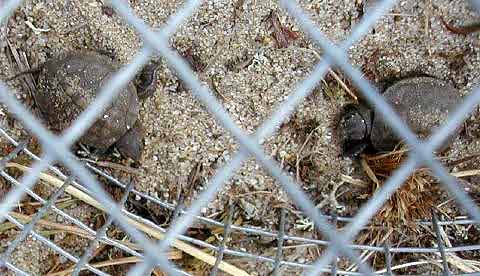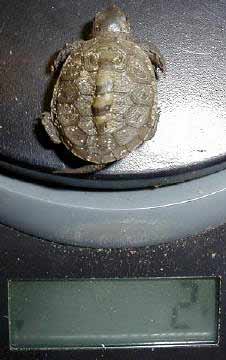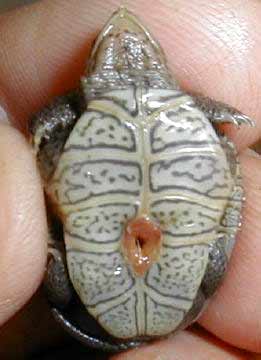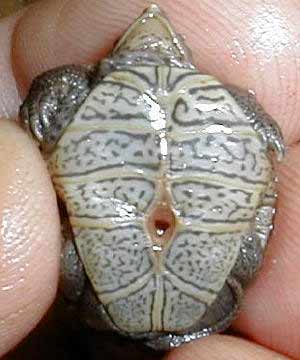On a Downward Slope — 14 September 2001
One speculation weíve tossed around in turtle gabfests has been the idea that second-clutch hatchlings should be smaller than their first-clutch counterparts, especially out here at the chilly end of the terrapin universe. Weíll know a lot more when the season ends and we can run the hard numbers from this yearís nests, but intuitively it sure seems as though hatchling sizes have trended downward the last week or so.
When the first baby emerged from Nest 192 on 11 September, I noted Hatchling 268 as “extremely small” at 2.24 centimeters and only 3 grams. I expect a larger turtle as the first hatchling to emerge. Today, as the balance of that nest hatched, I understood why she was so small.


 
The whole nest was filled with miniature turtles. Her “largest” sibling measured 2.41 centimeters and weighed 4 grams ó the only hatchling in the clutch to reach that lofty weight. The smallest of the twelve, Hatchling 327, was 2.11 centimeters and a whopping 2 grams. She also sported a twisted vertebral pattern.
Yet the most disturbing aspect of Nest 192 were the two hatchlings I found being eaten alive by maggots. Both weighed only 2 grams and had pipped, but hadnít emerged from their shells. Still, tiny maggots had entered through the egg crack, penetrated their yolk sacs and began to devour them. I had thought at first they might be dead, but when they moved it demanded immediate action. I picked off the predators and flushed the hatchlings with a sterile saline solution, hoping to rid them of any critters which might have remained hidden in some crevasse. Iíve also isolated Hatchling 328 and 329 in a separate nursery until Iím certain they are predator free. Even so, I remain concerned about how much of the sac has been consumed and what other damage these maggots may have done.
In total, this nest consisted of 4 emerged hatchlings that were discovered in the predator cage, 2 eggs destroyed by root predation, and 8 pipped hatchlings (including the two under maggot assault). The other 6 pipped turtles were in deadly peril and would likely have been attacked as the infestation progressed deeper into the egg chamber.
 
|